ISSN 2348-1196 (print)
International Journal of Computer Science and Information Technology Research ISSN 2348-120X (online) Vol. 8, Issue 3, pp: (178-194), Month: July - September 2020, Available at: www.researchpublish.com

ISSN 2348-1196 (print)
International Journal of Computer Science and Information Technology Research ISSN 2348-120X (online) Vol. 8, Issue 3, pp: (178-194), Month: July - September 2020, Available at: www.researchpublish.com
Abstract: This paper proposes a conceptual solution to help needy students to be qualified to enter the job market by providing them useful websites, applications, and facilities. Qualifying Poor students (QPS) is a business model that provides a digital platform to make students access many courses quickly. Moreover, QPS is also face to face learning to prepare students to communicate with lecturers to gain communication skills. The design thinking approach has been adopted in this paper to address the wellbeing issues of B40 students & youth in Malaysia through understanding their need, and then followed by building conceptual business models using modelling tools, such as Business Model Canvas (BMC) and Value Proposition Design Canvas (VPC). The approach includes conducting a literature review and interviews for understanding the needs, challenges, and critical problems, formulating and ideating initial business model options in solving the issues, and validation of the initial business model by interviewing the various customer segments, which are the donors, students, teachers, adult workers, companies and government employees.
Keywords: Wellbeing, Poor Qualifying Students, Poor students, E-learning, free online courses, 4 Lenses of Innovation, Business Model Canvas, Value Proposition Design Canvas, Strategy Canvas, Environment Map, Digital platform.
In the 21st century, the world becomes more sophisticated than before. This development has impacted every field and changes the companies' demand employees. Recruiting more qualified candidates is one of the promising strategies for reducing adverse impact in organizations[1] In the last decades, there are increase numbers of startup companies in technology areas such as Huawei, Oppo, Xiaomi, Vivo, Oneplus. In the job market for the period up to 2022, the demand will increase for Data Analysts and Scientists, Software and Applications Developers, and Ecommerce and Social Media Specialists, where their roles are significantly based on and enhanced by the use of technology[2] Learning is the most important means to build nation generation throughout history. Students will get a lot of knowledge by learning courses, either online or face to face. The integration of face-to-face and online learning is to assist in improving classroom understanding and expand knowledge through the innovative use of information and communications technology[3]. In recent years, the number of Universities and online learning platforms grow considerably. Because of this, the number of Qualified people increases, notably As face to face has benefits, online classes also make participation less intimidating and might increase the quality and quantity of interaction[4]. However, there is a significant segment of people have not interested in this approach because they have not enough money to access these approaches. Even though there is a lot of online learning platform, they do not fulfill people need due to financial difficulties. Poor students still suffer from this crisis to qualify themselves Hence, a digital platform is required in providing free & easy access to balanced education for B40 and poor students. This paper proposes a conceptual, QPS digital platform business model. QPS will make poor students find jobs easily because it focuses on the required market skills. QPS is the best solution to assess poor students who need to acquire skills to become an employee in their societies as QPS merge between online and face to face learning with free specialization courses.
ISSN 2348-1196 (print)
International Journal of Computer Science and Information Technology Research ISSN 2348-120X (online) Vol. 8, Issue 3, pp: (178-194), Month: July - September 2020, Available at: www.researchpublish.com
In the late 1990s, it is approximately between 300 and 420 million people worldwide living in chronic poverty[5] Furthermore, in 2013, 770 million persons remained in extreme poverty[6] The United Nations mentions that the number of youth is different from one country to another; It almost shapes between 15 to 30 per cent of the total of the population[7] As is known, a significant segment of students belongs to the adults' group who almost form more than 15 per cent of the world population. This ratio impacts negatively in societies because the government should assist them; instead, they rely on themselves. In 27 countries, the risk of poverty is higher for children and youth than it is for the elderly – social welfare systems must nevertheless do more to counter the growing threat of poverty in old age[8]. From time to time, the number of demands for technology jobs increases remarkably compared to other tasks in the market. Researchers estimate the returns on rising digitalization of occupations controlling for education, and they found that a one-point increase in an occupation's digitalization scores (score ranges from 0 to 100) was associated with a $292.80 wage premium[9]. Moreover, there are a lot of students who do not have enough money to acquire technology skills such as programming, digital marketing, web design, and so on This approach presents challenges for higher education in all countries including keeping pace with rapid advances in communications and social networking technologies; accommodating the increased costs of technology into existing mechanisms for financing higher education; and taking full advantage of the educational opportunities, these technologies provide to expand student access and improve their success in higher education[10] Unemployment has become an essential dilemma in many societies, especially with third world countries. Poverty impacts negatively on states in terms of the economy.
The design and system thinking approach have been adopted in this paper to address the wellbeing issues of B40 students & youth in Malaysia through understanding their need, and then followed by building conceptual business models using modeling tools, such as EM, Business Model Canvas (BMC) and Value Proposition Design Canvas (VPC). The approach includes conducting a literature review and interviews for understanding the needs, challenges, and critical problems; formulating and ideating initial business model options in solving the issues; and validation of the initial business model by interviewing the various customer segments, which are the donors, students, teachers, adult worker, companies and government employees.
It is imperative to identify similar products in the area. Researchers need to know the competitive environment. Therefore, research on the internet and Application Store is done to find the same products, such as Coursera, Udacity, Udemy, Datacamp, and the university of people. Researchers compare the advantages and disadvantages of existing products with each other. Through literature review, researchers can find the pains, gains, and job-to-do for the consumers, which will help to come out with the solutions.
Benchmarking is the process of measuring the performance of one's product against other useful products in the industry. To produce the best product, reference to the best products that perform similar features in the industry is needed, such as Coursera, Udacity, Udemy, Datacamp, and the university of people. Understanding and analyzing the related services enhance the performance of the QPS service.
Collection data was with google form to improve QPS based on students' answers Moreover, the interviews were done with some students who need this service, and those who want to teach others
There are four specific perspectives that makeup four lenses of innovation. The first one is challenging conventional wisdom where innovators will take a different path than a usual way. The second perspective is emerging trends were in this exponentially changing world, business, as usual, is no longer good enough. Innovators should embrace and harness the change. Are websites useful sufficient to attract targeted customers? What are the platforms that most people use now? The third one is leveraging resources, an alternative way of viewing skills and assets Innovators will use the skills to repurpose and recombine to create new values. Finally, the fourth perspective is a deep understanding of unmet needs.
ISSN 2348-1196 (print)
International Journal of Computer Science and Information Technology Research ISSN 2348-120X (online) Vol. 8, Issue 3, pp: (178-194), Month: July - September 2020, Available at: www.researchpublish.com
Humanization is the process of becoming more fully human as social, thinking, communicating, transformative, creative persons who contribute to the world around him[11] The humanizing digital entrepreneurship education program is a collection between humanity and online education. The pedagogy of educated people who are coexisting, navigating, or adhering to the socio-political practices of their schools is the core feature in Humanizing education. Constructing practices and beliefs within a humanizing education focus on the current culture, reality, and lived experiences of the education gainers[12]. Focusing on humanizing education delivered for the students and producing graduates who fear God, might be done when universities play a significant role in overcoming the negative uses of technology[13] When an education system focuses on sciences only and does not pay attention to good ethics and spiritual education aspects will produce generations of science knowledge and skills but less value morality and faith in their career and life. Instead, the education system must aim to develop a holistic person that is intellectually, spiritually, emotionally, and physically balanced and harmonious based on a firm belief in and devotion to God[14]
In 2014, the percentage of internet users in the world was 42.3%; this ratio equals around 3.035 billion users for the internet. This accelerated the expanded usage of digital learning. It expected by 2019, 50% of all classes trained in high schools in the USA will be provided online. More importantly, it is predicted that by 2020, 50% of campus coursework in collages in the USA will have a combination of face to face and online learning. Massive open online courses (MOOCs) are previously accessible worldwide via platforms such as edX and Coursera. The increase in the generation of "digital natives" immature individuals who have grown up immersed in digital technologies and for whom a life thoroughly combined with digital devices is the standard that means the demand for online learning is likely to accelerate. The biggest challenge for the high ministry of Malaysia is the Massive Open Online Courses (MOOCs) because it redefines how teaching and learning take place and provide students with new ways to access higher education. The aspirations of the Malaysian higher education system, increase student enrolment, raise the quality of instruction, internationalize higher learning institutions (HLIs), and do all this in a cost-efficient manner. MOOCs can help address all these aspirations. Further, the government aspires to create a higher education system that ranks among the world's leading more top education systems and enables Malaysia to participate globally. It is possible to achieve this aspiration with a robust focus on execution and on the concerted, collaborative efforts of all parties – the Ministry, higher learning institutions, industry, the public and private sectors, and students. Communally, ambitions can become a reality[15]
E-learning platform increases gradually in the last decades. Many digital learning platforms contribute positively to raise awareness and develop the skills of individuals, especially with the technology field that societies demand. These are some of the digital learning platforms:
1. Coursera: https://www.coursera.org/


ISSN 2348-1196 (print)
International Journal of Computer Science and Information Technology Research ISSN 2348-120X (online) Vol. 8, Issue 3, pp: (178-194), Month: July - September 2020, Available at: www.researchpublish.com
It is a worldwide online learning platform founded in 2012 by Stanford computer science professors Andrew Ng and Daphne Koller that offers massive open online courses (MOOC), specializations, and degrees. Coursera works with universities and other organizations to provide online courses, specialties, and degrees in a variety of subjects, such as engineering, data science, machine learning, mathematics, business, computer science, digital marketing, humanities, medicine, biology, social sciences, and others.
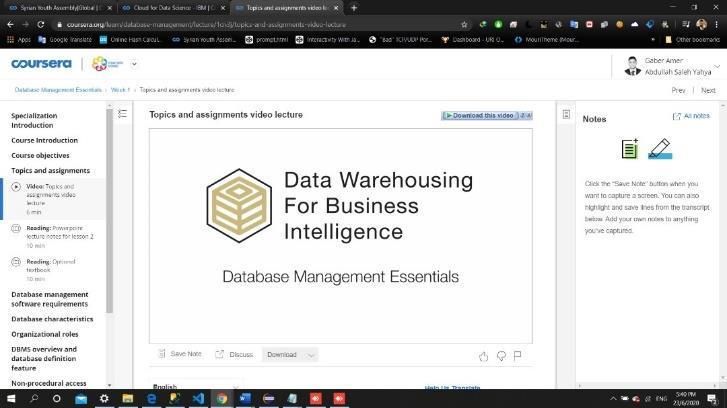
Strength Weakness
Good platform (web and app)

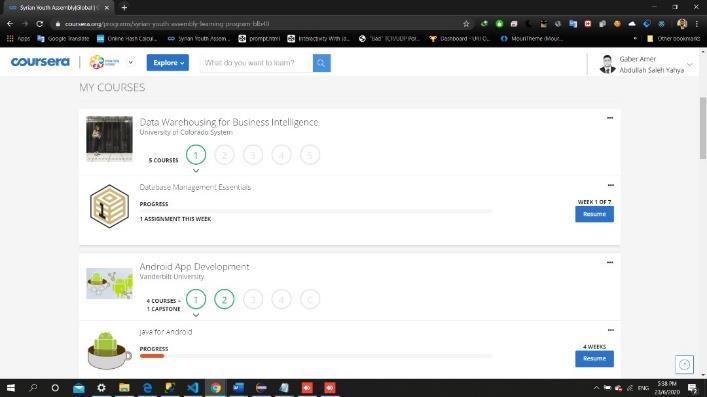
Good reputation
Reasonable cost.
Variety of courses.
Certification per course
Theory more than practice in many courses
Opportunity Threads
Contract with more universities
Extend in the market.
Turn the platform to university online learning.
2. Udacity(one million Arab coders initiative): https://www.arabcoders.ae/

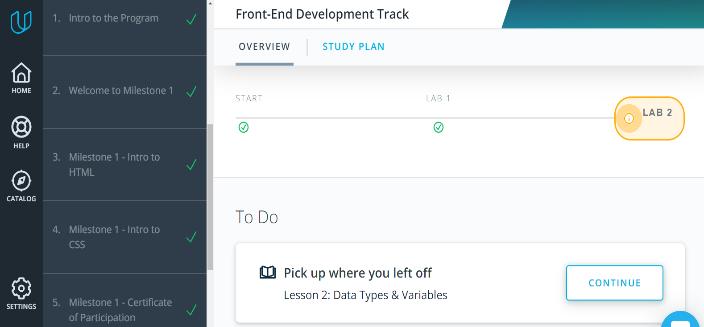
Powerful competitors
It is a for-profit educational organization offering massive open online courses It initially focused on offering universitystyle courses; it now focuses more on vocational courses for professionals. There is a part of it called one million Arab coders intuitive, and it gives Arab some free online classes to encourage and qualify students to lean, especially technology courses.
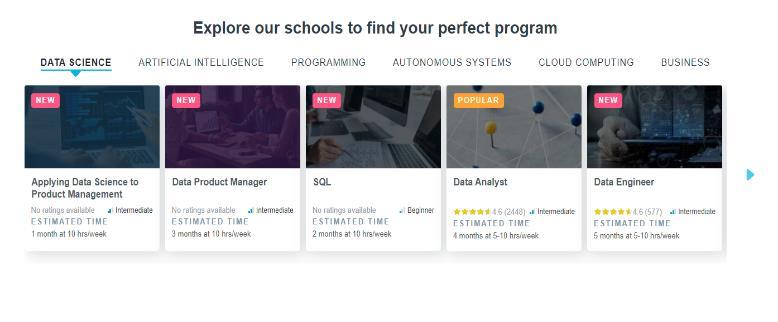
ISSN 2348-1196 (print)
International Journal of Computer Science and Information Technology Research ISSN 2348-120X (online) Vol. 8, Issue 3, pp: (178-194), Month: July - September 2020, Available at: www.researchpublish.com
Good platform (web and app).
Good reputation
Free courses for initiative part
Certification per course.
Variety of courses
Extend in the market.
Turn the platform to university online learning.
3. Datacamp: https://learn.datacamp.com/
High-cost for-profit Udacity.
Limited courses.
Threads
Powerful competitors.
DataCamp is an online data science learning platform offering tutorials and courses in data science. Students can master data analysis from the comfort of their browser, at their own pace, and tailored to their needs and expertise


(Datacamp)
Strength
Good platform (web and app).
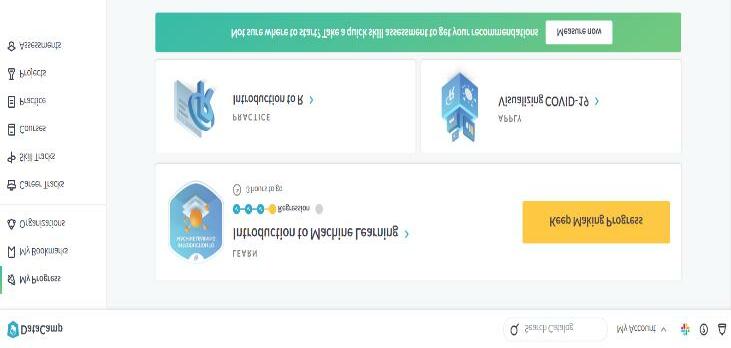
Good reputation
Reasonable cost.
Focus on Data Science
Certification per course.
Extend in the market.
Turn the platform to university online learning.
No certification
Weakness
Threads
Powerful competitors.
ISSN 2348-1196 (print)
International Journal of Computer Science and Information Technology Research ISSN 2348-120X (online) Vol. 8, Issue 3, pp: (178-194), Month: July - September 2020, Available at: www.researchpublish.com
Udemy: https://www.udemy.com/
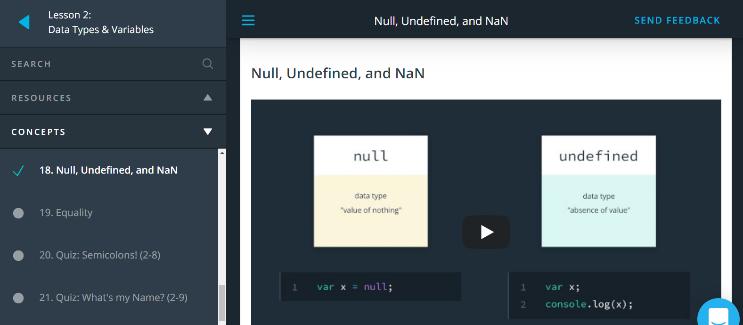
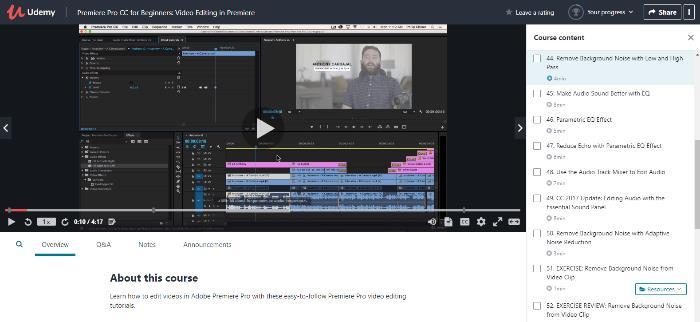
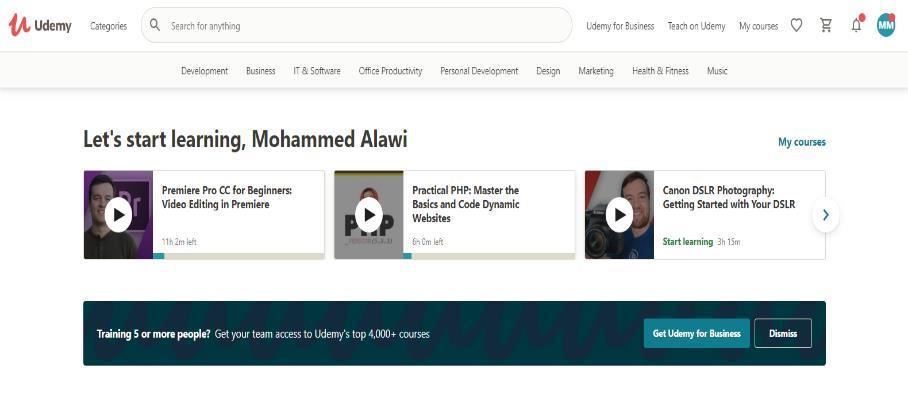
It is founded in May 2010, is an American online learning platform aimed at professional adults and students. As of Jan 2020, the platform has more than 50 million students and 57,000 instructors teaching courses in over 65 languages. There have been over 295 million course enrollments. Students and instructors come from more than 190 countries.

the platform to university online learning.
Physical learning still has an essential role in the current time. A lot of countries rely widely on the face to face learning until this moment Many of them exploit universities to increase the balance of the government by easing studying for international students. Citizens also take advantage of physical learning to be more qualified to build their countries in the future.
ISSN 2348-1196 (print)
International Journal of Computer Science and Information Technology Research ISSN 2348-120X (online) Vol. 8, Issue 3, pp: (178-194), Month: July - September 2020, Available at: www.researchpublish.com
5. University of the people: https://www.uopeople.edu/

It is a private not-for-profit, distance education university with its office in Pasadena, California. It was founded by entrepreneur Shai Reshef in 2009. Based on the official website of the university of people. The university charges no tuition fees because of donors who support the university's program to help students. However, it charges a $60 application fee, and an assessment fee per course completed ($100 for the undergraduate programs, and $200 for the graduate programs). Nevertheless, students who cannot afford the administrative costs may be eligible for scholarships. According to the United Nations High Commissioner for Refugees, the University of the People offers scholarships for refugees.
Good facilities
Good reputation
free programs
Variety of courses.
Certification per program
In the USA only
Limited students.
Opportunity Threads
Extend to other countries.
Online learning platform
Lack of Donations.
The Sustainable Development Goals (SDGs) contain 17 universal goals that were adopted in 2015. It is formulated for achieving a more sustainable and better future for all. (SDG1) is dedicated to eliminating poverty; the QPS program contributes in a direct way to reduce the number of needy people, especially students, by giving free courses for them to develop their skills and rely on themselves in the future. (SDG4) is dedicated to education. The QPS program increases the quality of education. It makes education accessible for the vast majority of students, face to face learning, and digital platforms will assist governments in spreading knowledge to the public and ease people to receive and understand knowledge with high quality and easiness. (SDG8) is dedicated to decent work and economic growth. The QPS program providing job opportunities for individuals, and this can be done through reskilling and upskilling them in proper jobs in companies or freelancing In short, the three sustainable development goals 1, 4, and 8 are powerful collection in the QPS program; and this integration will help societies to overgrow in terms of education and economy sectors. Get rid of issues such as poverty, ignores and unemployment.
ISSN 2348-1196 (print)
International Journal of Computer Science and Information Technology Research ISSN 2348-120X (online) Vol. 8, Issue 3, pp: (178-194), Month: July - September 2020, Available at: www.researchpublish.com
The digital learning services segment is viewing high demand for curriculum design & development, training delivery, and analytics services for the perfect functioning of digital learning systems. The growing literacy rate globally has encouraged several organizations to provide demand, flexible, and distinctive courses suited for individual requirements. The trend to undergo modularized and short sessions for upgrading knowledge base among students undertaking higher education is driving the eLearning market. Online platforms, such as edX and Coursera, are offering certified and university-affiliated courses that provide profitable opportunities to aspiring students. The ongoing COVID-19 pandemic has further encouraged institutions to adopt digital means. According to the World Economic Forum, in March 2020, approximately 73,000 or 81% of K-12 students attended lectures through the Tencent K-12 Online School[16]. Online learning increases the depth of comprehension and retention of course content, more essential discussions, emphasis on writing skills, technology skills, and life skills like time management, independence, and self-discipline[17]
The education in the world move to digital platform considerably, and this movement impacts positively on students generally. The accessibility of the technology and the vast nature of the internet increase online learning demands[18] The world will turn to digital platforms totally in the next few years. This turn will help us to build the program QPS in online platforms to meet the public needs.
Not only a significant segment of students who want to attend online courses to develop themselves but also teachers who do not have a job. The vast majority of people who might face difficulties in their lives, they probably find educational opportunities due to digital online platform[19]. The market still needs for online learning platforms to help students and teachers to get income or chance in the market by improving their skills.
The size of the digital learning market was rated to be over USD 165 Billion in 2015 and is probably to grow by 5% between 2016 and 2023, overriding USD 240 Billion[20]. This expansion will increase the economic power of countries by providing opportunities for individuals to get jobs and rely on themselves.

Even though there is a massive number of e-learning platforms that supply a lot of courses in many fields, the market still needs digital learning platforms to fulfill the increasing demand in the future. Reskilling and online certifications are the most significant categories today at USD 93 million. Primary & secondary supplemental education will be the largest
ISSN 2348-1196 (print)
International Journal of Computer Science and Information Technology Research ISSN 2348-120X (online) Vol. 8, Issue 3, pp: (178-194), Month: July - September 2020, Available at: www.researchpublish.com
category by 2021 at USD 773 million, growing at a CAGR of 60%. Test preparation will be the fastest-growing category in 2021, growing at a CAGR of 64%[21].
It is not easy to become a successful competitor with other businesses in the market. A new business needs novel ideas and strategies to ace the competition. The QPS program will exploit the digital market to build the company online, and also face to face to fulfill the needs and wants in all education fields. The most original features that most of the education system need is affordable and accessible in public, especially those who do not have money to learn something or acquire some skills by developing themselves.
Traditional learning The QPS program
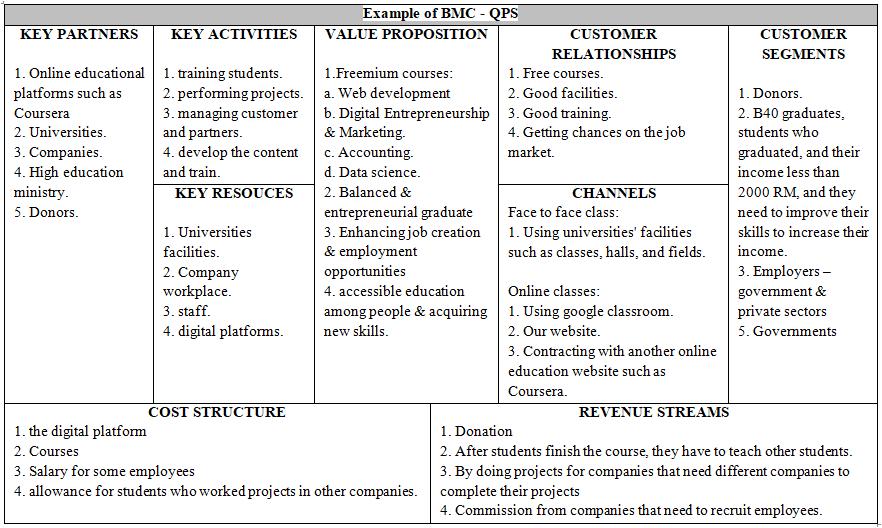
ISSN 2348-1196 (print)
International Journal of Computer Science and Information Technology Research ISSN 2348-120X (online) Vol. 8, Issue 3, pp: (178-194), Month: July - September 2020, Available at: www.researchpublish.com

The interview was done with 15 volunteers, four students, three teachers, two adult workers, two companies, two government staff, two donors. The first interview was with the students that three of them have degree programs 2 with bachelors of IT and one with economics. The fourth student has a monster of IT security. The questions concentrate on which is better face to face learning or online learning platform IT students prefer online because most of their time relies on computers, but the economy student chooses face to face learning as he feels boring during the use of the equipment for a long time. All teachers desire to continue digital learning platform since their times are saved, and their efforts are decreased. Two of them form engineering college and the last one from the economy. They are likely with an online platform. However, one of them has an objection about e-learning because it is difficult to supervise students properly, especially in exams. It cannot be seen the student's impression of whether they understand the lesson or not because at the end of the class, students mention that everything is clear, and they comprehend the lectures well; however, this is different with face to face classes as students ask questions
Furthermore, in engineering, college students have to apply some experiments in the laboratories, and this cannot be done online. Both adult workers graduated from Bachelor of Engineering; they extremely agree with the online learning platform as they can acquire skills such as programming or digital marketing that enable them to get opportunities in the job market. They said, "improving skills can be done while working on other fields since it can be anytime and anyplace"
ISSN 2348-1196 (print)
International Journal of Computer Science and Information Technology Research ISSN 2348-120X (online) Vol. 8, Issue 3, pp: (178-194), Month: July - September 2020, Available at: www.researchpublish.com
One of the companies operates in the online sales field, and the next company works in the digital marketing field Of course, because both companies are working with an online platform, they appear positive impressions for using elearning platforms, especially with fresh employees. The latter need specific courses on sales or marketing areas to improve their skills Government staff wishes that e-learning applies to the government sectors as it contributes widely to spreading knowledge and developing skills. It also helps the government by decreasing the ignorance and increasing the awareness of societies Moreover, they emphasized that a significant segment of the sectors in many fields turned to online and the others will turn to online soon The donors were willing to support our program QPS financially, and they ask if the program will rely on itself in the future or not. Our team answer was, of course, by making the beneficiaries will contribute to teaching others, and the commission that can be earned from companies by making project from them or giving them employees will subsidize us generally to continue our approach.
B. Survey:
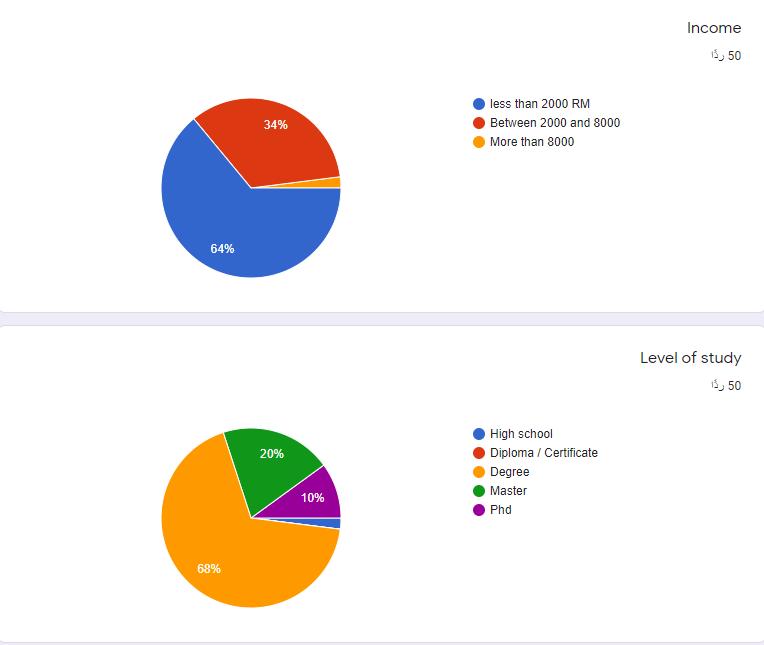

ISSN 2348-1196 (print)
International Journal of Computer Science and Information Technology Research ISSN 2348-120X (online) Vol. 8, Issue 3, pp: (178-194), Month: July - September 2020, Available at: www.researchpublish.com
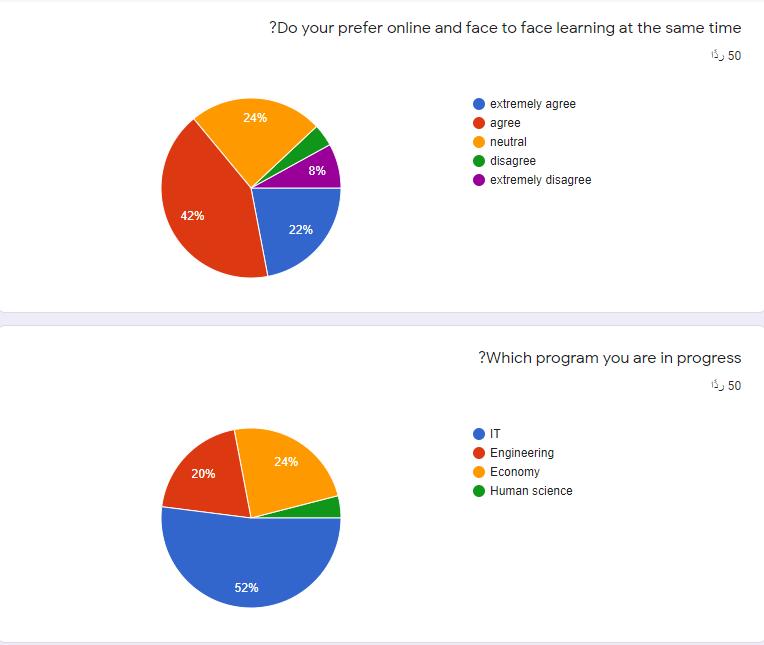
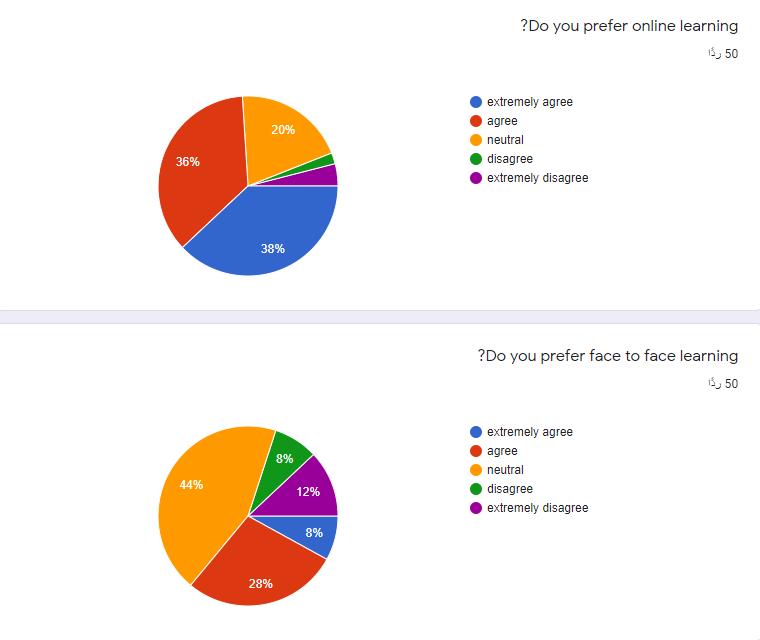
ISSN 2348-1196 (print)
International Journal of Computer Science and Information Technology Research ISSN 2348-120X (online) Vol. 8, Issue 3, pp: (178-194), Month: July - September 2020, Available at: www.researchpublish.com
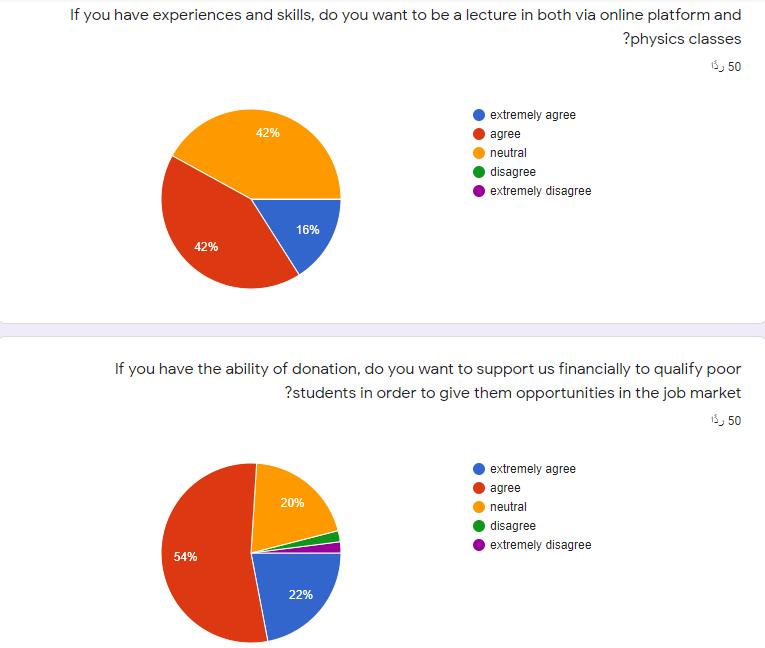

ISSN 2348-1196 (print)
International Journal of Computer Science and Information Technology Research ISSN 2348-120X (online) Vol. 8, Issue 3, pp: (178-194), Month: July - September 2020, Available at: www.researchpublish.com
It can be noticed that the highest percentage of contributes was from students. IT was the program that most of them participate in progress with while economy and engineering were the second with almost the same. The age between 20 and 40, and the income less than 2000 RM occupied the highest proportion in the survey compared to other ages and incomes. The significant segment of customers prefer online learning and teaching more than face to face learning and teaching, whereas blended learning ranked second place. The majority of donors agreed to subsidize us financially to apply or QPS program. Thus, the result of this survey supports our approach in terms of online and blended learning since the vast number of contributors interacted with the study positively by agreeing most of the questions.
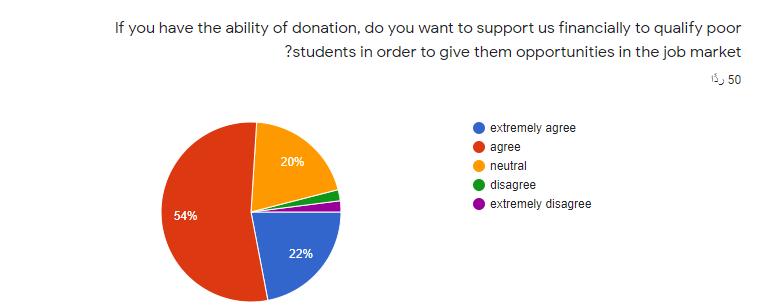
The customer segments describe the different groups of students, adult workers, teachers, compies, governments, and donors that want to acquire skills to increase their income and get opportunities in the job market. The business model must be designed with a deep understanding of customers' needs. This program target different age of the customers between 20 years and 80 years. Moreover, the income divided into three-part B40, the salary is less than 2000 RM, M40 their income is between 2000 and 8000 RM, T20 their income is more than 8000 RM. It can get benefits from customers who have a high income to support the program to grow efficiently.
The value proposition is the benefits and advantages that the customer segments find from this project. There is an online platform that enables students to get free courses or courses at affordable prices. The classes focus on the most demanding job in the market, such as web development, data science, marketing, and entrepreneurship The program enhances job creation and reduces unemployment by developing the skills of the students. The website eases the selection of companies with recruiting the employees, and it also makes the education accessible for a significant segment of people all over the world. These features may increase the economy of the governments due to reducing the ignores, and improving the critical skills in the job market.
QPS uses two channels; the first channel is face to face classes, and this can be done using university facilities such as classes, hall, and fields. The second channel is online classes; it includes google classroom, our online platform (QPS) platform, and other online educational platforms that will be contracted with.
Customer relationship is principally illustrating the importance of firms' offers The promotions of our program QPS, such as free courses, excellent facilities, proper training, and job opportunities, enhance the relationship between customers and companies positively to make it on the safe side without problems.
ISSN 2348-1196 (print)
International Journal of Computer Science and Information Technology Research ISSN 2348-120X (online) Vol. 8, Issue 3, pp: (178-194), Month: July - September 2020, Available at: www.researchpublish.com
The revenue stream explains the revenue that might be generated. Donation is considered one of the primary income that contributes directly to continuing the program. Moreover, students themselves have to teach others what they learn after finishing the courses. They also may do projects for other companies. This enables us to make a particular profit from the total benefit they get. The commission can be done when companies recruit employees from our website.
Vital resources describe the properties demanded by the firm to ensure the business model performs appropriately. The funds are university facilities, company workplace, staff, and online platform
Key activities are one of the essential blocks for a corporation to run successfully. As for the QPS program, it involves training students, performing projects, managing customers and partners, and developing the content and train.
Key Partners are the connections that firms have with other companies or any identity that assist the business model work. The key partners of the QPS program are universities, companies, the high education ministry, and online education platforms such as Coursera, Udemy, Datacamp, and so on.
Cost structure defines all the costs and expenses that a company must incur to maintain the business. For the QPS program, the digital platform cost, courses, salary of employees, and the allowance of the students who work project for other companies.
1. Online educational platforms such as Coursera 2. Universities. 3. Companies. 4. High education ministry. 5. Donors.
1.training students. 2. performing projects. 3. managing customer and partners. 4. develop the content and train.
1. Universities facilities. 2. Company workplace. 3. staff. 4. digital platforms.
1.Freemium courses: a. Web development b. Digital Entrepreneurship & Marketing. c. Accounting. d. Data science. 2. Balanced & entrepreneurial graduate 3. Enhancing job creation & employment opportunities 4. Easy and accessible education among people for acquiring new skills.
1. Free courses. 2. Good facilities. 3. Good training. 4. Getting chances on the job market.
Face to face class: 1. Using universities' facilities such as classes, halls, and fields.
Online classes: 1. Using google classroom. 2. Our website. 3. Contracting with another online education website such as Coursera.
1. Donors. 2. B40 graduates, students who graduated, and their income less than 2000 RM, and they need to improve their skills to increase their income. 3. Employers –government & private sectors 5. Governments
1. the digital platform 2. Courses 3. Salary for some employees 4. allowance for students who worked projects in other companies.
1.Donation 2. After students finish the course, they have to teach other students. 3. By doing projects for companies that need different companies to complete their projects 4. Commission from companies that need to recruit employees.
ISSN 2348-1196 (print)
International Journal of Computer Science and Information Technology Research ISSN 2348-120X (online) Vol. 8, Issue 3, pp: (178-194), Month: July - September 2020, Available at: www.researchpublish.com
Job to do Pains Gains
Donors. - donate their money on good things.
Poor students who finish high school
Companies that need qualified employees
-Learn programing courses that job market needs. And get qualified for teaching others.
-looking for proper employees.
- unable to donate -software problems.
-Lack of understanding IT courses that companies need. -They cannot pay their fees.
-They cannot find a job as they are not qualified.
- the ability for an educational donation. -secure and easy software to donate online
-free courses. -Qualification in teaching. -opportunities for jobs.
-hard to find employees. -easy to find qualified employees.
Companies that need someone to implement their projects.
Looking for professional employees to finish their project.
Volunteer teachers. - Sharing knowledge & increase opportunities for jobs.
- hard to find professional workers to complete their projects.
- Reduce unemployment. – Helping many people by supporting them to be qualified.
- Open online courses. -Professional tutors. -face to face classes.
- Open an online platform to find Professional employees.
– Flexibility in time of learning.
- A low price to pay for the fees for the courses. -find a near university from them home.
-Reliable online platform to find suitable employees.
- easy to find professional employees.
-unable to get the chance to volunteer. - Personal experience. -Increase employability for people.
-Open an online platform to find Professional employees.
-Reliable online platform to find suitable employees.
Reduce unemployment. Quality digital platform.
-Increase Volunteer skills, especially with physical classes.
-Quality content.
- Helping the poor students to get free courses.
- Job opportunities.Professionally qualified teachers.
- recruit qualified workers. - Creating Job opportunities.
- Creating Job opportunities. - recruit qualified workers.
-Helping the poor students to get free courses. - making students as a Volunteer after finishing their courses.
The governments. Teach students by professional students at a low price.
-Face difficulties in how to save their time and cost to deliver to their students a good content of learning.
-Save money. -Quality of contents.
- Open online. Professional tutors, and class in chosen universities.
Flexibility in time of learning.
- A very suitable price to pay for the fees for the courses.
-Job opportunities. Professionally qualified teachers.
In conclusion, this conceptual solution may give certain advantages and provides new opportunities for Muslims to expand a successful business for the ummah. Allah (SWT) in the Holy Qur'an and his messenger Prophet Muhammed (PBUH) mention that Muslims have to help each other to build a robust Muslim community. Therefore, QPS ensure that this business can accomplish our value and also can meet user requirement so that QPS program can be accepted and use widely in many countries, especially in Malaysia. The QPS program could assist in offering an online educational platform for students and adult workers to learn demand courses and improve their skills. It also enables companies and organizations to recruit the proper employees for a short time. Governments will take benefits by making education accessible for all students across the country by using the QPS program. The program will offer many courses by contract with other digital educational platforms such as Coursera, Udemy, Udacity, and so on. In the future, the QPS conceptual business model is going to be realized by developing a complete business plan based on the V2MOM (Vision, Values, Methods, Obstacles, and Measures) Model. QPS program also can provide both application and web-based platforms for their users, and it will be a tool education to make knowledge more efficient and powerful for the majority of people.
ISSN 2348-1196 (print)
International Journal of Computer Science and Information Technology Research ISSN 2348-120X (online) Vol. 8, Issue 3, pp: (178-194), Month: July - September 2020, Available at: www.researchpublish.com
[1] F. Furniss, "Assessment methods," Appl. Behav. Anal. Child. with Autism Spectr. Disord., pp. 33–66, 2009, doi: 10.1007/978-1-4419-0088-3_3.
[2] K. Schwab, Insight Report: The Future of Jobs Report. 2018.
[3] J. Watson, "Blended Learning : The Convergence of Online and Face-to-Face Education," North Am. Counc. Online Learn., vol. 572, p. 16, 2008, doi: 10.1016/j.aca.2006.05.012.
[4] A. Y. Ni, "Comparing the Effectiveness of Classroom and Online Learning: Teaching Research Methods," J. Public Aff. Educ., vol. 19, no. 2, pp. 199–215, 2013, doi: 10.1080/15236803.2013.12001730.
[5] A. McKay, B. Baulch, M. Hisarciklilar, and D. Lawson, "How Many Chronically Poor People are There in the World? Some Preliminary Estimates," SSRN Electron. J., no. 45, 2012, doi: 10.2139/ssrn.1754407.
[6] A. Castañeda, D. Doan, D. Newhouse, M. C. Nguyen, H. Uematsu, and J. P. Azevedo, "Who Are the Poor in the Developing World?," Policy Res. Work. Pap., no. 7844, p. 41, 2016, [Online]. Available: https://papers.ssrn.com/sol3/papers.cfm?abstract_id=2848472.
[7] The U. Nations, World youth report 2013, E.18.IV.7. New York, New York 10017: the United Nations, 2013, [Online] Available: https://www.un.org/development/desa/youth/world-youth-report/wyr2018.html
[8] T. Hellmann, P. Schmidt, and S. M. Heller, "Social Justice in the EU and OECD Index Report 2019," p. 274, 2019, [Online]. Available: https://www.bertelsmann-stiftung.de/fileadmin/files/BSt/Bibliothek/Doi_Publikationen/ SJI_2019.pdf.
[9] “By Mark Muro, Sifan Liu, Jacob Whiton, and Siddharth Kulkarni,” no. November, 2017.
[10] M. E. David and M. J. Amey, "Assessment of Higher Education Learning Outcomes Feasibility Study," SAGE Encycl. High. Educ., vol. 1, 2020, doi: 10.4135/9781529714395.n52.
[11] M. del Carmen Salazar, "A Humanizing Pedagogy: Reinventing the Principles and Practice of Education as a Journey Toward Liberation," Rev. Res. Educ., vol. 37, no. 1, pp. 121–148, 2013, doi: 10.3102/0091732X12464032.
[12] L. P. Law, "Humanizing education: Teacher leaders influencing pedagogical change," ProQuest Diss. Theses, p. 149, 2015, [Online]. Available: https://search.proquest.com/docview/1718551404?accountid=10673%0A http://openurl.ac.uk/redirect/athens:edu/?url_ver=Z39.88-2004&rft_val_fmt=info:ofi/fmt:kev:mtx:dissertation& genre=dissertations+%26+theses&sid=ProQ:Education+Database&atitle=&title=Humanizin.
[13] A. Brahim, and A R. A. Dahlan, "University of the Future : Reshaping Malaysian Universities Relevance through Humanising Education and 4IR," International Journal of Management and Commerce Innovations vol. 6, no. 2, pp. 1106–1113, 2019.
[14] C. Da Wan, M. Sirat, and D. A. Razak, "Education in Malaysia Towards a Developed Nation," Yusof Ishak Inst., p. 20, 2018, [Online]. Available: https://www.iseas.edu.sg/images/pdf/ISEASEWP2018-4Wan.pdf.
[15] M. Of, "Malaysia Education Blueprint 2015-2025 (Higher Education) MINISTRY OF EDUCATION MALAYSIA," vol. 2025, 2015, [Online]. Available: www.moe.gov.my.
[16] Global Market Insights, Inc. e-Learning Market size, by technology, by 2026, https://www.gminsights.com/pressrelease/elearning-market
[17] J. Stern, "Introduction to Online Teaching and Learning," Int. J. Sci. Educ., no. 3, pp. 1–10, 2018, doi: 10.1002/9781118784235.eeltv06b.
[18] E. G. Chaney, "Web-based Instruction in a Rural High School: A Collaborative Inquiry into Its Effectiveness and Desirability," NASSP Bull., vol. 85, no. 628, pp. 36–46, 2001, doi: 10.1177/019263650108562804.
[19] B. Gilbert, S. John, and F. College, "Online Learning Revealing the Benefits and Challenges How has open access to Fisher Digital Publications benefited you ?," 2015.
[20] J. Risley, "Market trends," Text. Rent., vol. 102, no. 5, pp. 28–30, 2019, doi: 10.1016/b978-1-85617-036-9.50008-5.
[21] A. Khaitan, "A study by KPMG in India and Google," no. May, 2017. [Online]. Available: https://assets.kpmg/content/dam/kpmg/in/pdf/2017/05/Online-Education-in-India-2021.pdf